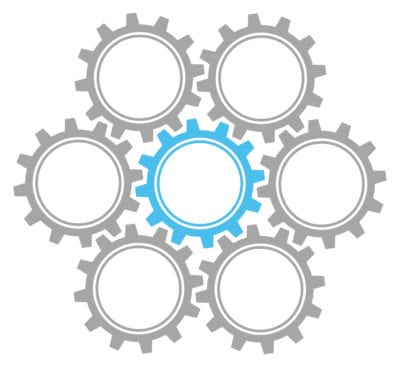Your business has decided it’s time to change your IT services partner or department. Whether you have outgrown your current solution, had one too many failures, feel like IT is just too reactive or just know there must be a better way this guide will simplify the process.
We have guided thousands of small businesses through the process of selecting their new IT services partner / department and it can be considerably easier than you might imagine whether you are looking to outsource IT, insource IT or a combination of both. To simplify the process we will describe the 7 components of an IT department and the 4 IT support models.
Before we get started, let’s make sure you are reading the right guide:
- You have between 15 and 250 full-time equivalent computer using staff members.
- You need your business and IT to be running smoothly as interruptions are expensive.
- You need a service desk / help desk support with reasonable response time.
- Protecting your data is important.
- You either have no internal IT, you are considering mixing internal and external IT, you want to switch from one to the other, or have a current IT firm that does hourly support or managed IT services.
7 IT Department Components

Now that we know you are at the right place, lets define exactly what all an IT department can entail. When most people we meet say they are looking for better / different IT support, all they think of is help desk support and projects. So we will start there and expand:
-
Service / Help desk / Support team
- One or more onsite or remote individuals that helps fix problems or make minor changes that your staff requests.
-
Project Department
- A department of project engineers that implements more significant changes like network and server upgrades and installations of new solutions.
-
Central Services
- Even if not named, all IT departments have a list of solutions they try to standardize on to give you more predictable results. Patch management, monitoring, antivirus, antispam, disaster recovery, backup, cloud services, security training / testing, etc.
-
Virtual CIO / Fractional CIO
- Again, even if not named, everyone will give you advice on what you should do with technology though there is a dramatic variance in the results. The results start with that of a Virtual CO (Captain Obvious) that tell you to replace your equipment every 5 years and reach their peak with CIO’s that lead you in digital transformations that accelerate your business goal attainment and efficiency.
-
Alignment / System Analysts
- Think of this department as the technology auditors.
- Analysts look for misalignments with the sole purpose of reducing the majority of issues caused by IT and optimizing the solutions that are in place.
- Most people that we meet with are looking for “proactive” support, which we have only seen provided by the inclusion of this component of the IT department with dedicated individuals that do not work on fixing problems, but exclusively on preventing them.
- System Analysts create the misalignment reports, so that the Virtual CIO / Fraction CIO can successfully steer the business to achieve higher results.
-
Security
- There is a risky assumption that all IT service partners of IT departments include Security specialists. Security specialist have very different certifications, skills, processes and tools. Highly guided by national (NIST 800-171) and international (ISO 27001) standards and prioritized by the Center for Internet Security.
-
Application / Software Development
- Responsible for the creation and integration of proprietary systems for small or medium businesses.
4 IT Support Models

Now that you have a high level understanding of all the components of an IT department, lets go over the 4 models that are available to small and medium businesses that have between 15 and 250 full time equivalent computer using staff members:
-
-
Internal Staff
- Dedicated full time W2 employee(s) to IT. Typically only done by businesses with more than 75 full time equivalent computer using staff members in a single office.
- This model may be combined with any of the other 3 models and referred to as co-managed.
-
Hourly IT Firms / IT Consultant(s)
- You and your staff organize work to be done by them. In some instances, they can setup monitoring to be alerted to some issues that they can autonomously work on with your prior permission.
- This model was the most popular model until 2015, and still is for small businesses with less than 10 staff. IT Firms that are willing to work on an hourly basis (sometimes purchased in blocks of hours) have greatly reduced in favor of the Managed Service Provider (MSP) model. You will have more success looking for independent IT Consultants.
- IT Consultants charge from $100-$200/hour. As with most things, the more you pay per hour the better the service. Frequently the lower paid IT Consultants are less experienced and take more time to do the same work a better paid IT consultant would need.
-
Managed Service Provider (MSP)
- The most popular model since 2015 with thousands of providers. You pay a flat monthly fee based on the size of your environment with unlimited remote support. MSP’s benefit from being able to predict their revenue and you get a bill that you can budget for.
-
Aligned IT
- Common in larger businesses, Aligned IT is becoming necessary for small and medium businesses as they begin their digital transformations to being a technology enabled organization.
- Aligned IT evolves from the MSP models flat fee concept with:
- Strategic planning process that maps each of your department’s business objects against a technology plan.
- Technology alignment to reduce issues caused by technology, what most we interview think of as “proactive”, and optimize existing systems.
- We have authored an eBook to give you a deeper understanding of Aligned IT.
-
Evaluation Next-Steps

You now need to organize your thoughts and decide on the key results you want from your future IT department model.
-
-
-
Proactive vs Reactive
- Do you know the difference? Reacting faster through monitoring does not mean being proactive. Having a process to prevent problems in the first place and having a plan to continuously reduce problems from happening is proactive and boosts your staff’s productivity by 10%-25%.
-
Strategic vs Tactical
- Do you want your technology to be aligned with your leadership team and help solve your business problems? We call this Strategic IT.
-
-
For secondary objectives you have a list of other requirements:
-
-
-
Security
- IT firms and MSP’s especially since last 2018 have been targeted by hackers as a way to exploit the MSP’s clients. Unfortunately, it takes years for an MSP to gain a high enough security maturity level to minimize risk. Look certification of the IT firm by an accredited auditor of either or ISO27001 or SOC 2 Type 2.
-
Hours of coverage
- Do you need regular business hours, extended or 24/7? Do you need live coverage where a competent IT professional is available or just a call back during off-hours?
-
Transparency
- Access to documentation of your environment. Consider the potential to leave the provider in the future, do you want to be able to do so easily with your documentation, or to feel held hostage?
-
-
To help you organize your decision, we have created an evaluation form. For more questions, contact an XL.net IT expert today.
